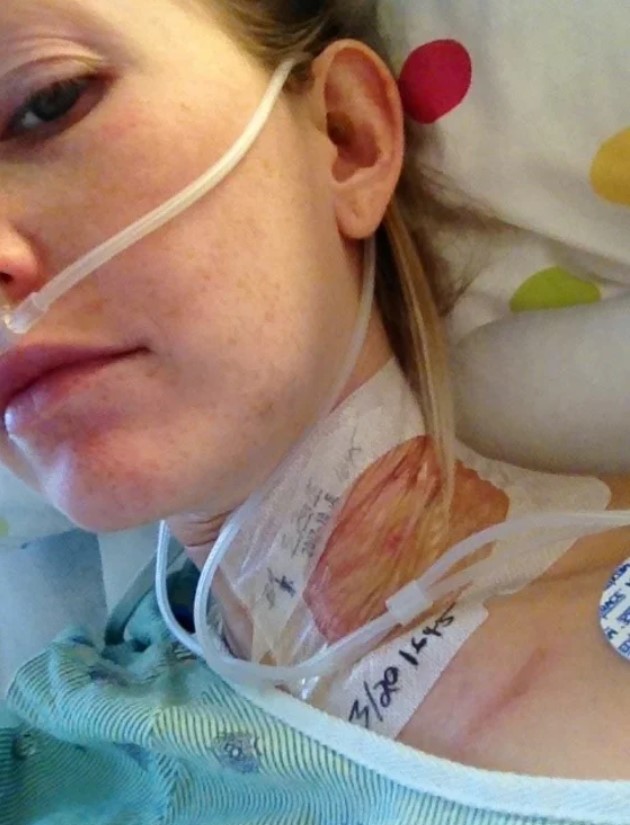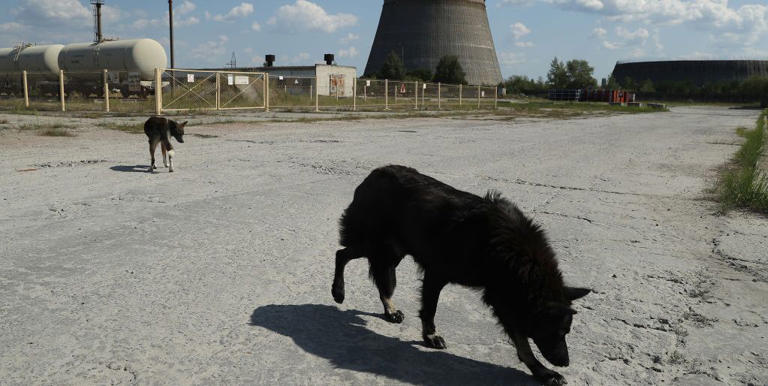
Gwen Schmidt, a courageous woman who was only 21 years old when diagnosed with stage four colorectal cancer, defied the odds stacked against her. Doctors delivered a devastating blow, predicting her survival chances to be a mere 5%.
“I was paralyzed by fear, completely terrified,” recounts Schmidt, now 35, reflecting on the tumultuous journey that forever altered her life. “It felt like everything I knew up until that point vanished in an instant.”
In her early twenties, Schmidt lived the life of a typical college student—balancing time with friends, pursuing studies, and attending parties. However, the discovery of blood in her toilet prompted a visit to the doctor, leading to the heart-wrenching diagnosis.
Traditionally associated with aging, cancer has now emerged as a grave concern among younger individuals. A groundbreaking 2020 study led by researchers at the esteemed Penn State Cancer Institute reveals a 30% increase in cancer rates among this age group since the 1970s.
Schmidt represents one among over a million adolescents and young adults, aged 15 to 39, who receive a cancer diagnosis each year worldwide, according to research. Unfortunately, this number is projected to rise.
While scientists are uncertain about the exact cause, they hypothesize that improved screening techniques and lifestyle factors, such as obesity, sedentary habits, and alcohol consumption, likely contribute to the surge in cancer cases among young adults.
Thanks to advancements in cancer therapies, the National Cancer Institute estimates that around 86% of young adults diagnosed with cancer will survive. While this progress is undoubtedly remarkable, it means that a growing number of young people must grapple with the aftermath of the disease.
Schmidt, who endured multiple surgeries, radiation, and chemotherapy, emphasizes that the true challenge lies in life beyond active treatment. “Once you complete surgeries and chemotherapy, that’s when the hardest part begins,” she shares. “You have to come to terms with your new reality and figure out what it looks like now.”
This newfound reality can be an emotional and physical roller coaster ride. Extensive research has revealed that young cancer survivors face a higher risk of developing 24 different health conditions, including heart failure, kidney and liver disease, hearing loss, and even stroke. Additionally, they encounter unique obstacles when it comes to dating after cancer, pursuing education and careers, and enduring years of nerve-wracking screenings and scans to monitor for potential recurrences or other treatment-related complications.
To address the unique needs of adolescents and young adults, an increasing number of hospitals and cancer centers across the nation are launching specialized programs. These initiatives provide patients with counseling, personalized screening plans, and, most importantly, a much-needed sense of community among peers who understand their journey.
Schmidt, who remains a patient at Northwestern Medicine’s adolescent and young adult program in Chicago, attests to the immense value of these programs. She returns every six months for scans and cherishes the opportunity to connect with others who can truly empathize with the emotional whirlwind that accompanies a young adult cancer diagnosis. “Being in a room with people who just get it is an incredible feeling,” she asserts.
The Challenges of Dating After Cancer
Among the numerous obstacles that young cancer survivors must confront, reentering the dating scene can be particularly daunting, especially when treatment has affected their fertility, according to experts.
Psychologist Stacy Sanford, co-director of Northwestern Medicine’s adolescent and young adult cancer program, acknowledges the struggle of revealing such a significant life event to a new partner. “How do I disclose this huge thing that happened to me to someone that I just started dating?” Sanford ponders. “In some relationships, it can even cause conflict because being a caregiver is challenging, and not everyone is equipped to handle it.”
Dr. Annah Abrams, director of the adolescent and young adult cancer program at Massachusetts General Hospital, advises young patients on how to broach the subject of cancer with their potential partners. She emphasizes that it doesn’t have to be the opening line when meeting someone, but it becomes crucial to discuss it on the second or third date if there is a desire to deepen the connection.
Schmidt personally experienced the challenges of dating after cancer and the impact it had on her plans for motherhood. Chemotherapy and life-saving surgeries had rendered her unable to conceive naturally. “I spoke to this guy, and I told him I can’t have kids of my own, and he said, ‘I can’t continue dating you because having biological children is really important to me,'” she recalls. “I said, ‘Okay, thanks for being honest with me.'”
Eventually, Schmidt found love and married Noah, a decade after her diagnosis. With the help of Northwestern Medicine, she welcomed her daughter, Vivian, into the world through surrogacy just nine months ago.
The Long-Term Risks of Cancer Treatment
Historically, research on the long-term effects of cancer treatment in young adult survivors has been limited compared to other age groups. Experts highlight that health problems can develop years later due to the damage inflicted by life-saving treatments on organs.
Dr. Stephanie Smith, a pediatric oncologist and advisor to Stanford Medicine’s adolescent and young adult cancer program, explains that radiation and certain chemotherapies can impact heart function and increase the risk of heart valve disorders. Moreover, some young patients treated with cisplatin, a chemotherapy drug, may experience permanent hearing loss due to inner ear damage.
Unfortunately, radiation, while essential in killing cancer cells and shrinking tumors, can also raise the risk of developing leukemia, breast, lung, and pancreatic cancer, as noted by the American Cancer Society.
To address these concerns, doctors at adolescent and young adult cancer centers follow specialized guidelines tailored to young survivors. These guidelines may involve specific heart testing, routine mammograms or colonoscopies at earlier ages than the general population, and extended monitoring of treatment effects for many years.
Sanford emphasizes the importance of vigilant monitoring for potential long-term effects. “We hope they have many more decades to live,” she affirms.
Overcoming ‘Scanxiety’
One of the most significant sources of distress for young survivors is the perpetual fear of cancer recurrence. Years of follow-up testing can trigger what is commonly known as “scanxiety,” and data suggests that young adults diagnosed with cancer may be more prone to psychological distress than their older counterparts.
Schmidt, who has already experienced five cancer recurrences, shares her personal experience with the anxiety that accompanies regular scans. “I would go into a scan thinking, ‘Okay, how many tumors will they find?'” she admits.
To help young survivors cope with this fear, Sanford employs acceptance and commitment therapy, a form of psychotherapy that addresses uncertainty surrounding cancer recurrence. By helping patients embrace the unknown and focus on the present, Sanford assists them in navigating the psychological challenges that arise.
Initially, celebrating life’s triumphs and planning events years in advance was difficult for Schmidt, who has been in remission for six years. “I never thought I would live long enough to get married and start a family,” she confides. “All of my dreams have come true.”
Schmidt’s inspiring journey, along with the growing support provided by specialized programs and medical professionals, serves as a beacon of hope for young adults battling cancer. Despite the myriad challenges they face, these resilient individuals are determined to not only survive but also thrive in their post-cancer lives.


